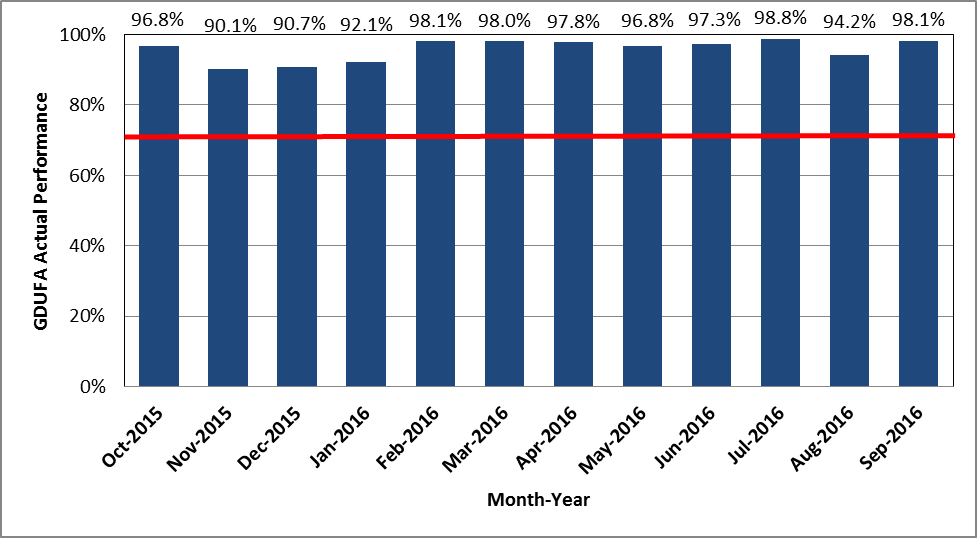FY2016 Regulatory Science Report: Dissolution Methods for Long-Acting (LA) Periodontal Drug Products
Introduction
Long-acting periodontal drugs are complex locally-acting products that often do not have a measurable or clinically relevant systemic pharmacokinetic measure for bioequivalence. The purpose of these studies is to develop alternative bioequivalence criteria, bio-relevant dissolution methods, and identify key physicochemical attributes that affect the drug dissolution behavior and bioavailability. Findings will help the FDA in developing product recommendations and facilitate the approval of bioequivalent generic long-acting periodontal drug products.
Research
The FDA currently has two research grants and a contract awarded to explore viable bioequivalence and dissolution methods for long-acting periodontal drug products including biodegradable microspheres, implantable matrices and in situ forming implants. Critical product attributes and manufacturing effects on drug release kinetics are being investigated as well as new low volume flow through dissolution cells that may better mimic the periodontal micro environment. These awards will advance the FDA’s understanding and ability to regulate potential generics within this field.
Comparison of a qualitatively and quantitatively similar periodontal microspheres to Arestin® were prepared using factional factorial design method to evaluate the manufacturing process parameters on the final product release profiles using a modified USP 4 flow through apparatus under closed loop configuration. In addition, in-silico simulations were used to predict drug release based on the physicochemical properties of the drug, polymer, and particles, illustrating the importance of these parameters and manufacturing conditions on drug release.
Figure 1. Application of USP 4 Dissolution Apparatus to Assess Dissolution of Microparticles for Periodontal Disease. S. K. Patel, et al. AAPS Denver, CO (November 13-17, 2016)

New dissolution apparatus that better mimic the periodontal pocket with more bio-relevant dissolution chamber sizes and gingival crevicular fluid flow rates are being tested and compared to drug release tests done in animals. Drug release profiles from PerioChip®, a chlorhexidine gluconate implantable gelatin matrix, is found to dependent on flow rate whereas chip swelling was impacted by the chamber size. Correlating and validating the dissolution conditions to the in vivo release will provide a more bio-relevant dissolution methodology to ensure the equivalence of generic products.
ORS staff facilitating research in this area
- Yuan Zou, Darby Kozak
Projects and Collaborators
- Dissolution Methods for Long-acting (LA) Periodontal Drug Products (New)
- Site PI: Lisa Rohan
- Grant #: 1U01FD005447
- Dissolution Methods for Long-acting (LA) Periodontal Drug Products (new)
- Site PI: S Kevin Li
- Grant #: 1U01FD005446-01
- Evaluation of the ex vivo release profile of a long-acting biodegradable periodontal dosage form in a canine periodontal disease model
- Site PI: Joseph Araujo
- Contract#:HHSF223201510771P
Publications and Presentations
- Application of USP 4 Dissolution Apparatus to Assess Dissolution of Microparticles for Periodontal Disease. S. K. Patel, A. C. Greene, S. Rothstein, Y. Zou, S. Choi, A. Glowacki, R. Gottardi, C. S. Sfeir, S. R. Little, L. C. Rohan. AAPS Denver, CO (November 13-17, 2016)
- Low Volume Dissolution Devices for Long Acting Periodontal Drug Products. Wei Ren, Gary Kelm, Stephanie Choi, Darby Kozak, Mohammad Absar, Yan Wang, Edwin Chow, Ross Walenga, and S. Kevin Li. AAPS Denver, CO (November 13-17, 2016)
- Bioequivalence Testing Considerations for Complex Periodontal Products: Drug Release, Matrix Degradation, and Pharmacodynamics in a Canine Periodontal Disease Model. D. Kozak, Y.Wang, S. Choi, M. Park, I. Lannoy, M. Brooks, and J. Araujo. NYAS Equivalence of Complex Drug Products: Scientific and Regulatory Challenges New York City, NY (November 9, 2016)
Outcomes
- Research projects in progress
